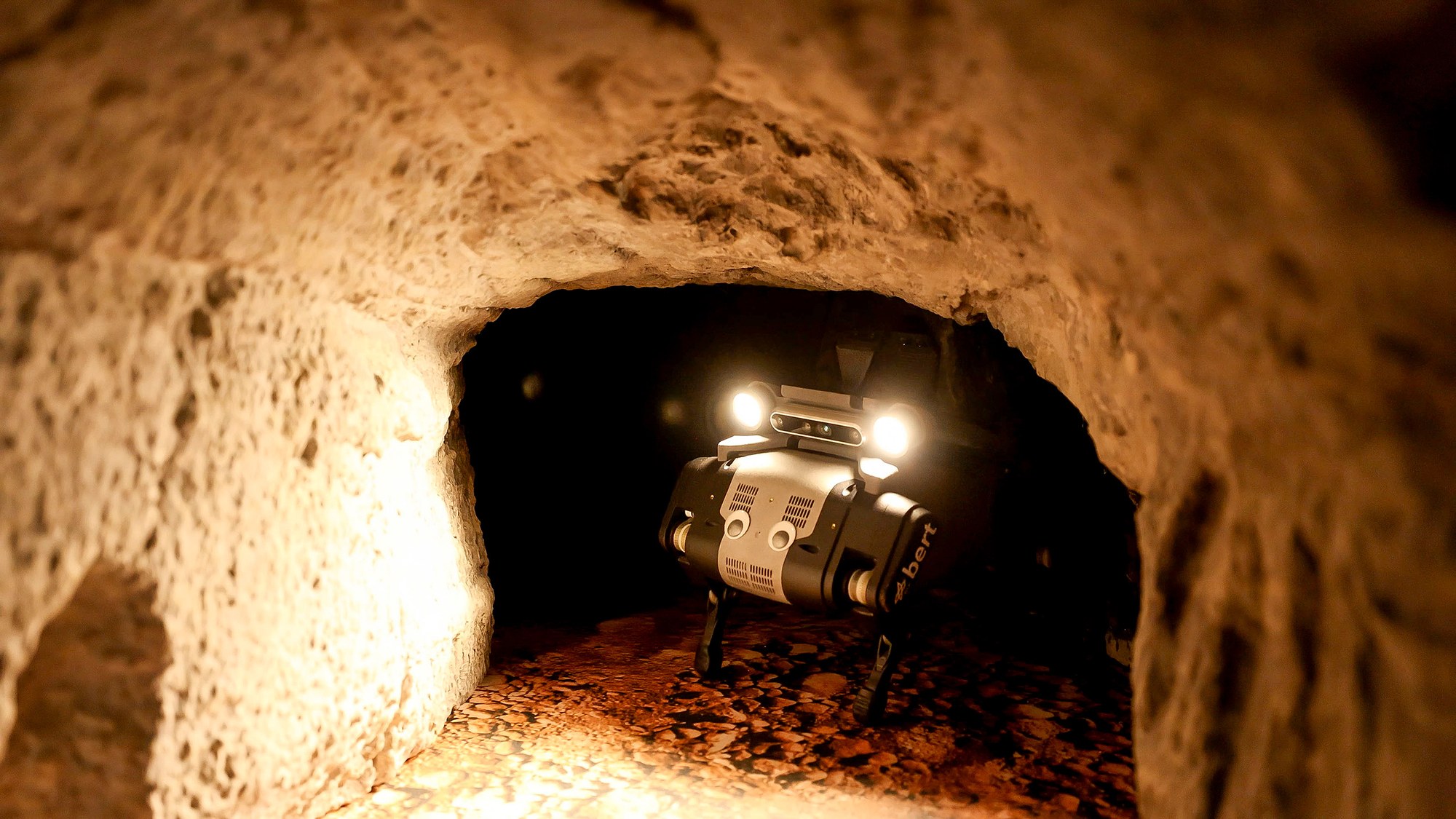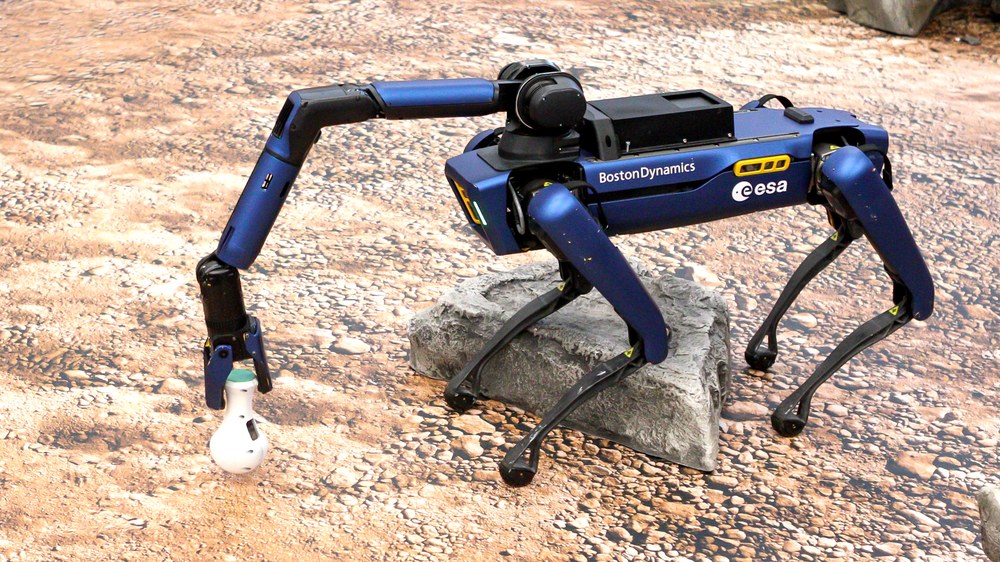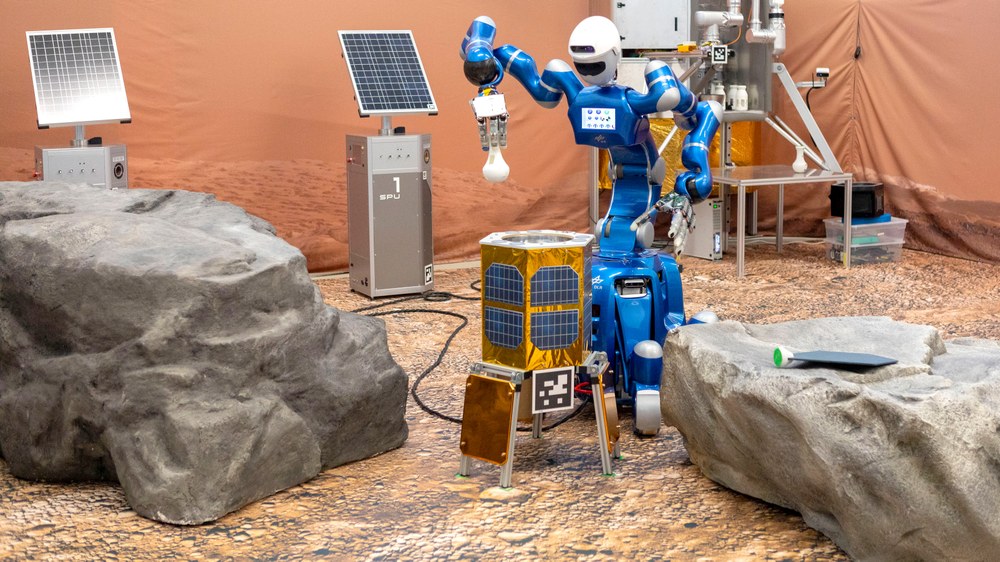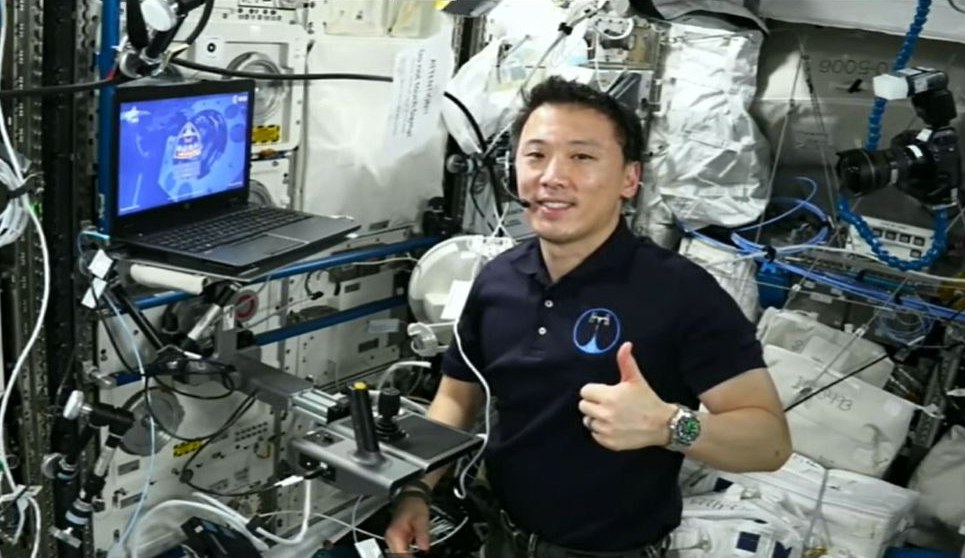Surface Avatar experiment – controlling robots from space

In a dark place, wisps of fog drift through a cavernous grey expanse. Suddenly, bright spotlights illuminate the huge concrete hall; like two glowing fingers that push through the darkness and bring to life bold colours that stand out from the dreary, monotone surroundings. Slowly, the source of the lights comes into view: a humanoid robot with the DLR logo blazoned on its blue gripper arm…
The robot stops briefly, awaiting further instructions from orbit. Up above, on board the International Space Station ISS, is US astronaut Jonny Kim – the person currently controlling this robot exploration mission. Although he is hundreds of kilometres above his exploring target and flying over at 28,000 kilometres per hour, his eyes, ears and sense of touch are, so to speak, extended down to Earth. While his body floats in space, all his senses are focused on a dark hall in Oberpfaffenhofen, Bavaria.

Science fiction becomes reality
Well, so far this reads quite well, but there's a reason I never become a science fiction author and instead work at DLR's German Space Operations Center (GSOC) in Oberpfaffenhofen near Munich! I'm probably better suited to a sober, technical language.
But what I have just described actually happened here – more or less. What sounds like science fiction is real – I merely added the fog and darkness. US astronaut Jonny Kim has just controlled not one, but several robots on Earth from the International Space Station.

Here in the foyer of the operations centre, our robotics colleagues from the other side of the campus have set up a small Martian landscape for the Surface Avatar experiment. They have placed four very different robots from DLR and ESA into this environment: one humanoid, one rover and two quadrupeds. Just watching the preparations, which took several days, was a thrill. The project is rewarding for both sides: we at the Columbus Control Center – part of the GSOC – marvel at the different robots and today's technical possibilities. The robotics team, on the other hand, are amazed at all that needs to be considered and has to happen before the technology demonstration experiment can be carried out on the Space Station.
Robot discovers 'prehistoric cave paintings'

Jonny Kim can use the four robots to explore this 'Martian' environment as if he were diving into a completely unknown world with them (actually, he's never been to visit us – we could also have had him explore our offices and control rooms instead of the 'surface of Mars'). Earlier, the team distributed rock samples for Jonny to collect – and he actually found evidence of intelligent life here! As a joke, the robotics engineers created some 'prehistoric' cave paintings. The astronaut was thrilled by the whole scenario: "My mother always told me that playing video games would lead to nothing – I'm afraid she was wrong!"

ESA/NASA
It was particularly fascinating to see that robotics has now progressed far beyond having to 'remote control' a gripper arm. It is enough for Jonny to specify completely abstract goals, such as selecting a stone to be collected in the live image feed; the robot then does everything else – finding its way there, picking up the stone and transporting it to the lander – all entirely on its own. In the meantime, the human operator can turn their attention to other tasks that require more 'brainpower' than picking up and carrying.
To conclude – a handshake across the void
Jonny no longer even has to decide which robot should take care of a rock sample or whether it would be most effective for several different robots to work together – the robots figure that out among themselves, working as a network and constantly exchanging data with each other. Jonny Kim spent about two and a half hours on the Surface Avatar experiment. For just as long, the robots moved across our artificial Martian surface, as if guided by a ghostly hand, watched by a large audience in the building and robotics colleagues at their computers.

To conclude, Jonny thanked Neal Y. Lii, Principle Investigator of the Surface Avatar experiment at the DLR Institute of Robotics and Mechatronics, with a handshake across many thousands of kilometres. The humanoid robot Justin extended its mechanical hand to Neal and, thanks to 'force feedback', the astronaut was also able to feel Neal's grip.
After the experiment, I see Neal and Lucia Brunetti – the Project Manager of the Flight Control Teams – standing together and talking happily. Those responsible at the Robotics and Mechatronics Center look much more relaxed than the day before yesterday when I asked them how things were going. No wonder – their highly complex experiment worked perfectly, a fine example of successful cooperation between humans and machines.
Related links
- DLR news: Marching towards Mars – ISS robot experiment 'Surface Avatar' successfully concludes
- DLR news: Four-legged friends and other robots: ESA astronaut tests avatar control between ISS and Earth
- DLR blog post: Surface Avatar – Remotely controlling robots from space to complete tasks and explore other worlds
- About Surface Avatar
- DLR Institute of Robotics and Mechatronics
- DLR site Oberpfaffenhofen
